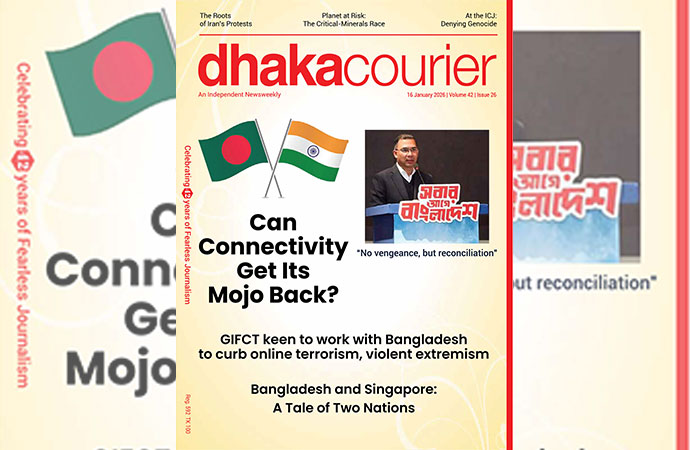Reportage

The media industry faces a tough challenge as concerns around fake news rise, meaning advertisers associated with those media outlets could run the risk of being tarred by the same brush.
Fake news is an erroneous, now and again dramatic report that is made to pick up consideration, delude, hoodwink or harm society. In contrast to deception, which is off base on the grounds that a journalist has befuddled realities, counterfeit news is made with the expectation to control somebody or something. Counterfeit news can spread immediately when it furnishes disinformation that is lined up with the gathering of people's perspective in light of the fact that such substance isn't probably going to be addressed or marked down.
We have entered another universe of majority rule government where anybody can post anything on the web offering ascent to the bloggers. Brands take the help of their prevalence to spread brand mindfulness and even create deals. What began as a guiltless, commonly helpful relationship gradually transformed into a fiscal system. In the era where consumer starts and ends their purchase cycle by reading reviews and peer generated content, brands realized the potential to sell through influencers leading to unethical promotions or somewhat fake advertising practices.
Consumer trust in media has endured a critical shot after the ascent of 'fake news'. In spite of the fact that the issue is maybe more overflowing in the US, UK customers are as of now feeling the impacts of being exposed to and encountering fake news in the media they expend. In the previous year, half (47%) of buyers have been suspicious that a story they have perused might be phony, with 75% of individuals confiding in the media outlet that conveyed those accounts less accordingly.
The study, by Network Research of more than 1,000 grown-ups aged 18 to 74, demonstrates trust in data from the media for the most part has dropped for 32% of individuals, expanding to 38% for 18-to 34-year-olds.
Keith Grossman, global chief revenue officer at Bloomberg Media, says "The consumer expectation is that they are reading 'real' news; nobody sets out to read 'fake' news. The onus is therefore on [media] brands to have the infrastructure in place - with quality journalists, fact checkers and concrete data, to be able to provide factually correct news to their readers."
Dominic Carter, chief commercial officer at News UK, says there is a point to be made about "credible news brands", the ones "that do care about provenance and accuracy versus a distributor who cares less and therefore isn't prepared to check [sources], leaving it open for the consumer to go to what could be fake stories"
The latest cautioning around fake news originated from World Wide Web maker Tim Berners-Lee, who named fake news as one of three key difficulties in an open letter to check the 28th commemoration of his creation.
Fake news increased impressive consideration in the 2016 United States election, with the two Democrats and Republicans reprimanding the other for spreading false data. Numerous in the media and those freely surveyed after the decision trusted the far-reaching expansion of phony news helped impact the race's outcomes.
In light of feedback about neglecting to check the conveyance of fake news amid the 2016 presidential race in the United States, Facebook and Google have found a way to take action against disinformation. They have shaped an alliance called First Draft and are working with real media outlets to instruct Internet clients about how to spot fake news. They are also working with third parties to create independent fact-checking websites and are exploring ways to identify and label news stories that cannot be verified, much like the way Wikipedia editors label entries they feel should be questioned.
YouGov gathered information from 8,869 members in its online board from Asia Pacific (weighted to be illustrative of the online populaces in Australia, Hong Kong, Indonesia, Malaysia, Philippines, Singapore, Thailand and Vietnam) and revealed that 68% of them accepted there is an issue with fake news on digital platforms.
Just under half thought there were also issues with fake news in newspapers (49%), on TV (47%) and on radio (41%).
In any case, on the off chance that it was simply the brand that had been advancing fake or deluding content, they were prepared to make more extraordinary strides: a dominant part of shoppers would never again make buys from this brand (54%), would pick an alternate brand in future (51%) or tell family and additionally companions about it (51%).
Three of every ten (29%) would share this data via web-based networking media while a quarter (26%) said they would erase the brand's application from their telephone.
Examples of fake news
1. An attack on your brand's reputation - fake news about brand is buzzing on the Internet.
2. An error in communication - unknowingly spread fake news through channels.
3. The nature of brand's advertisement - because of communications, the consumer doubts brand's values or honesty.
4. The location of your brand's advertisement - advertised on a website perceived by some as fake news.
5. An error in critical assessment - based an internal decision on fake news.
Remember, in the end, fake news is just another form of crisis, and just like for any other crisis, two elements in place to keep its repercussions under (relative) control:
• An alarm framework that will enable you to distinguish the early flags of the emergency.
• A nitty gritty technique to deal with every classification of situation.
Stay safe
1. Monitor brand reputation and industry on the web and on social.
2. Identify early on the topics that can spur a reaction from the public.
3. Speak the emotional language consumers tend to favor on social.
4. Be authentic and build a relationship with audiences.
5. Check in detail the information received and share on social.
6. Be aware, the nature of the websites where the brand is being advertised.
Knowing how to efficiently monitor what's being said in real-time about the brand on social media, have a chat with one of our social listening consultants.
The Internet has disturbed the media business and we lie in an odd place where there is a steady issue of what to accept and what not to accept.
Gatherings of people presently are more caution than before to this sort of indigenous PR opportunity and purchasers of these brands have begun wincing at extraordinary special promoting that may not appear to be genuine. In such cases, the new time of clients may evade the brand or even begin negative battles against them communicating that the brand isn't coming clean in promoting.
From a client voyage and notoriety outlook, it is essential for brands to recognize and recognize genuine and counterfeit news. Such affecting components straightforwardly affect clients' adventure to find, consider and buy items and administrations.
Fighting fake news
1. Create reliable and honest content true to their brand values.
2. Build relationships over time, do not only rely on one blogger or thought leader to promote the brand.
3. Keep an eye out for similar websites and URL- some websites have really dodgy and unique names, be sure to check the content on such websites before advertising on them in any form.
4. Brands must ensure that they monitor their coverage regularly to keep a tab on fake sources.
5. Before considering any partnership, look for evidence. Who has the source worked with before, does the feature make asserts that are not bolstered inside the article and so on.
6. Give customers the power to curate their authenticity alongside the brand.
Enamul Asif Latifee, Department of Business Administration, Shahjalal University of Science and Technology.

























Leave a Comment
Recent Posts
Remembering Kalidas Karmakar ( ...
The art world remembers Kalidas Karmakar, a visionary whose creativity ...
An Evening with Shishir Bhatta ...
Cosmos Art Echo, the artist talk initiative of Gallery Cosmos and Cosm ...
Myanmar denies genocide, calls Rohingya crackdown co ..
Yes, of course
Earth’s average temperature last year hovered among ..
Bangladesh and Singapore: A Tale of Two Nations